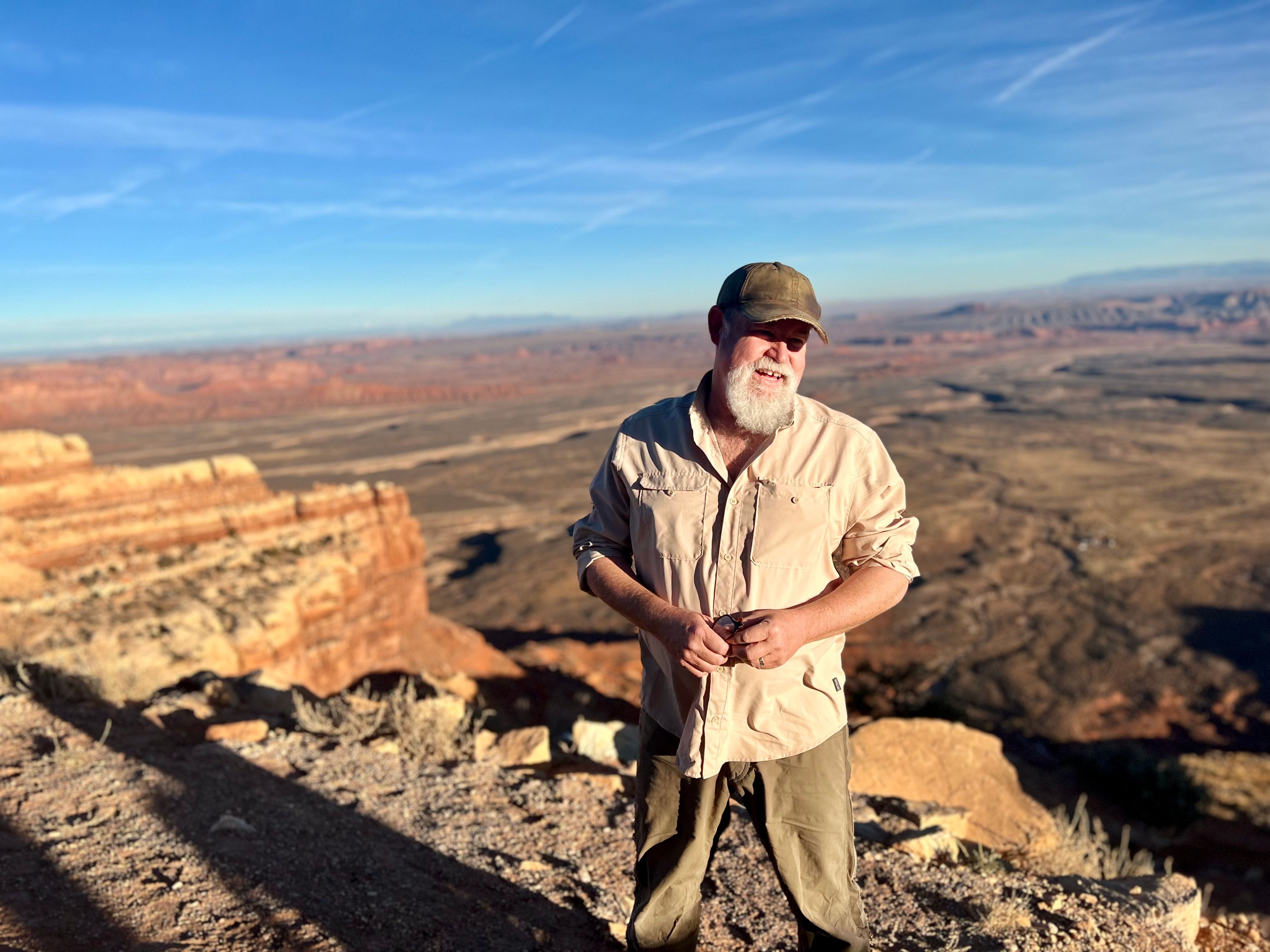
Date: March 5, 2026
Location: Timbermine Steakhouse
Time: 4:45pm- Doors open for VIP
5:45pm- Doors open for General
TFNU is proud to host acclaimed author and naturalist, Craig Childs as the speaker at our 2026 Author Dinner Event. This annual fundraising event for TFNU is one of our largest sources of operational revenue each year and we are thrilled to have Mr. Childs.
Craig Childs is a hopeless tracker of wonder who has written more than a dozen books involving the natural world. His narrative nonfiction and journalism have appeared in High Country News, The Atlantic, Outside, The New York Times, NPR, Radiolab, and he is a contributing editor at Adventure Journal magazine. He’s won the Orion Book Award, the Colorado Book Award, the Galen Rowell Art of Adventure Award, and three times he’s won the Sigurd F. Olson Nature Writing Award. Home for him is off-grid in the high desert of western Colorado near the Utah border.
From the New York Times bestselling and award-winning author of The Emerald Mile comes a rollicking, poignant account of a highly dangerous, life-changing, 750-mile trek through one of the world’s grandest wildernesses. A WALK IN THE PARK: The True Story of a Spectacular Misadventure in the Grand Canyon by Kevin Fedarko (Scribner; on sale: May 28, 2024) narrates the odyssey the writer and his best friend undertook to transect the entire length of the Grand Canyon, a feat billed by the handful of experts who have managed to complete it as “the toughest hike in the world.” A thrilling tale perfect for readers of Into Thin Air and Wild, A WALK IN THE PARK will expose the hidden facets of the crown jewel of America’s National Parks: austere and unforgiving, but suffused with magic, drenched in wonder, and redeemed by its own transcendent beauty.
A few years after quitting his job to follow an ill-advised dream of becoming a guide on the Colorado River, Kevin Fedarko was approached his longtime friend and collaborator, the photographer Pete McBride, with an idea as bold as it was hairbrained: they embark on an end-to-end traverse of the Grand Canyon, a journey McBride claimed would be “a walk in the park” for which no preparation was required. The two men were no strangers to diving into adventures with little planning, yet they quickly realized that the Grand Canyon was harsher and more demanding than any place they had been before. As they struggled to make their way through the all but impenetrable reaches of the canyon’s truest wilderness, a labyrinth of thousand-foot cliffs and crumbling ledges where water is measured out by the teaspoon and every step is fraught with peril, it immediately became clear that the men were out of their depth and poorly equipped for their journey—all of which could equal a death sentence in the uncompromising gorge, and very nearly did. But their misadventure also brought them into contact with a group of veteran long-distance hikers who would volunteer their time, knowledge, and skills over the following months to guide the men through the canyon, bringing them to hidden pockets only a handful of humans had ever before seen.
As Fedarko ventures further into the canyon, he brings us deeper into its history. He introduces us to the figures who have shaped the park into what it is today, those who have spent countless hours scratching the surface of its many secrets, and several who have lost their lives in pursuit of the very adventure he was currently undertaking. Members of the canyon’s eleven Native American tribes expose layers of fraught history that call into question the myths at the center of our country’s national parks. Most importantly, Fedarko bears witness to the ways commercial development, over-tourism, and resource mining have brought the canyon to a precipice, threatening to damage not only the park’s surface but its very heart.
“To spend a year moving through the Grand Canyon is to recognize that we need spaces that are wilder than we can fathom, because these places call forth aspects of our nature that have been permitted to wither and languish,” Fedarko concludes as his odyssey draws to an end. We need these places to remind us that the Earth is not ours to extract from and ruin; it is instead “a palace of wonder whose greatest treasure, perhaps, is the role it grants us as temporary stewards and caretakers, passing our duties from one generation to the next in a covenant that bind us to ourselves and the land.” A WALK IN THE PARK is an ode to such vanishing places, and a deeply moving plea for the preservation of America’s greatest national treasure.